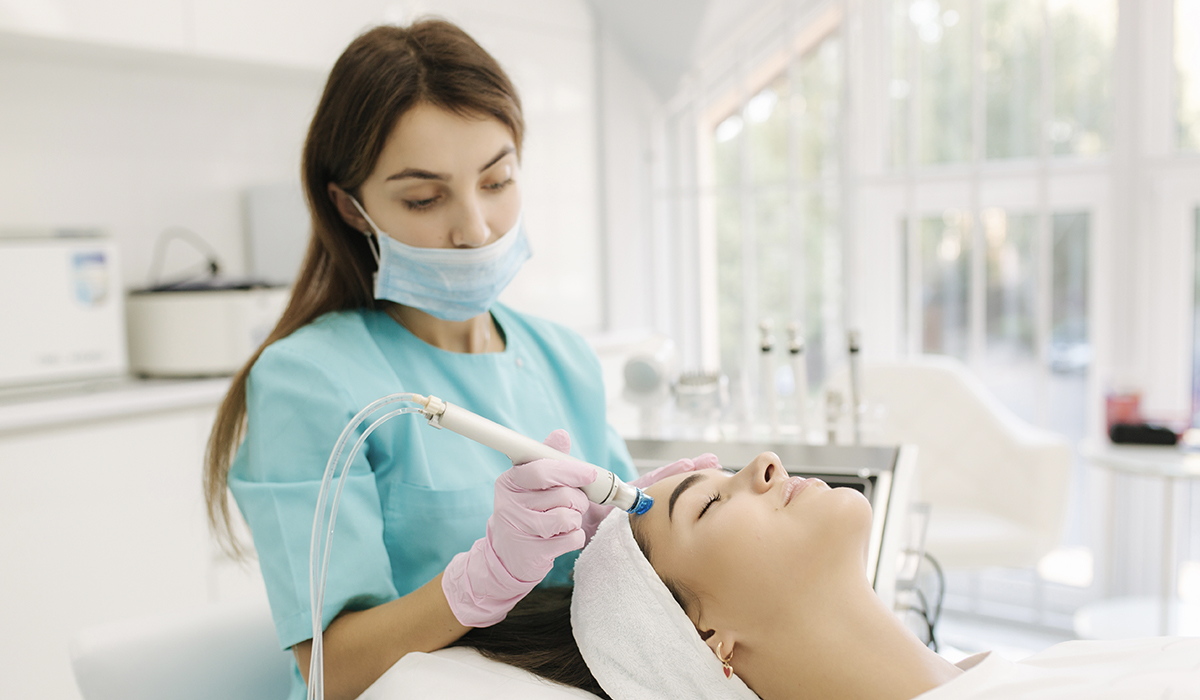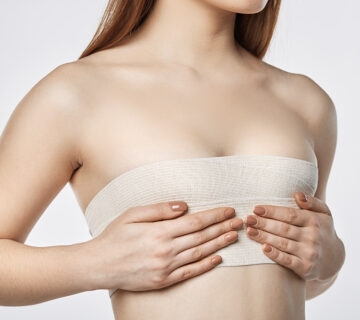Everyone wants clear, dewy, glowy skin. You know the kind—the face of CoverGirl, the celebrity on a health magazine cover. It’s that undeniably perfect-looking skin that appears as smooth as velvet and shines in all the right places: the cheekbones, tip of the nose, just above the lip, and center of the forehead. There isn’t a single blemish. It’s just flawless.
How does someone attain the skin so many seek? It’s not so simple. There are several factors that work together to help you achieve such near-perfect results. This includes drinking enough water, getting eight hours of sleep every night, moving your body daily, using sunscreen, visiting a dermatologist annually, and finding the right skincare regimen for your skin type. A HydraFacial can also help.
Buglino Plastic & Reconstructive Surgery breaks down the HydraFacial process, it benefits, and more to help you decide whether it’s right for you.
What is a HydraFacial?
HydraFacial treatment is a noninvasive procedure that cleanses, extracts, and hydrates the skin. The patented technology basically combines hydradermabrasion, a chemical peel, extractions, and antioxidants. It can be safely applied to the face, forehead, cheeks, nose, mouth area, neck, and decollete.
The effects are immediate and long lasting. However, it’s important to undergo this treatment every four to six weeks to continue to improve your appearance over time.
HydraFacials are popular because they benefit all ages and skin types. It’s great for teens with acne, and adults with wrinkles or hyperpigmentation. Those with sunburn, rashes, rosacea, or pregnant, shouldn’t receive this treatment.
What are the major benefits?
HydraFacial treatment is a noninvasive procedure that cleanses, extracts, and hydrates the skin.
The HydraFacial can address a variety of skincare needs, from fine lines and wrinkles to elasticity and firmness, to even tone and brown spots. Major benefits include:
- Refreshes & Rejuvenates Skin
- Reduces Fine Lines & Wrinkles
- Evens Skin Tone & Hyperpigmentation
- Adds Vibrancy
- Improves Elasticity & Firmness
- Smoothes Texture
- Relieves Congestion
- Minimizes Enlarged Pores
How does it work?
The entire procedure is approximately 30 minutes, meaning you can schedule an appointment during your lunch hour or in between brunch with friends and a shopping trip on the weekend. There is no associated downtime.
The HydraFacial is administered in three simple steps. The first is cleanse and peel. A pen-like device exfoliates the skin, removing dead skin cells from the outer layer. The second step is extraction and hydration. That same applicator unclogs pores and saturates the face with moisturizers. The final step is fuse and protect, which delivers serums, also known as boosters, to the skin to treat specific issues such as hyperpigmentation or enlarged pores. This can be customized based on individual concerns.
What are the boosters and how do they work?
Boosters enable estheticians to tailor every treatment to the patient. Each offers its own solution, ranging from brightening to firming to calming.
For example, the HydraFacial Regen GF Booster enhances collagen and elastin production, reduces fine lines, and removes toxins. The NassifMD Hydraglucan Intense Hydration Booster protects skin, hydrates, and improves signs of aging. The Alastin Trihex-Pro Booster supports elastin and collagen growth, reduces fine lines and wrinkles, and improves texture. The Circadia Protec Plus fights against signs of redness. HydraFacial Britenol minimizes the appearance of dark and sun spots.
It’s important to undergo this treatment every four to six weeks to continue to improve your appearance over time.
What are other add-ons?
In addition to boosters, patients can choose from two additional extras:
Lymphatic Drainage
This therapeutic massage treatment utilizes light pressure and long strokes to increase the flow of lymph and reduce bodily toxins. Adding this to your HydraFacial can help with seasonal allergies, reduce inflammation, and remove toxic buildup.
Dermaplaning
Dermaplaning, also known as microplaning, is a method of exfoliation that uses a blade to remove dead skin cells, peach fuzz, and hair from your face. This erases acne scars, and leaves a smooth surface.
How much does a HydraFacial cost?
Typically, HydraFacials can range between $150 to $300 per treatment. The final cost depends on the geographic location of the MediSpa, the experience of the administrating medical esthetician, and the types of boosters and extras your skin requires.
Are there any risks involved?
There are minimal side effects or risks involved with undergoing a HydraFacial. There’s also no downtime after treatment. However, some patients may experience a bit of temporary redness immediately following the facial. Patients should avoid applying makeup afterward, however, to allow the antioxidant and nutrient-rich serums to seep into the skin.




